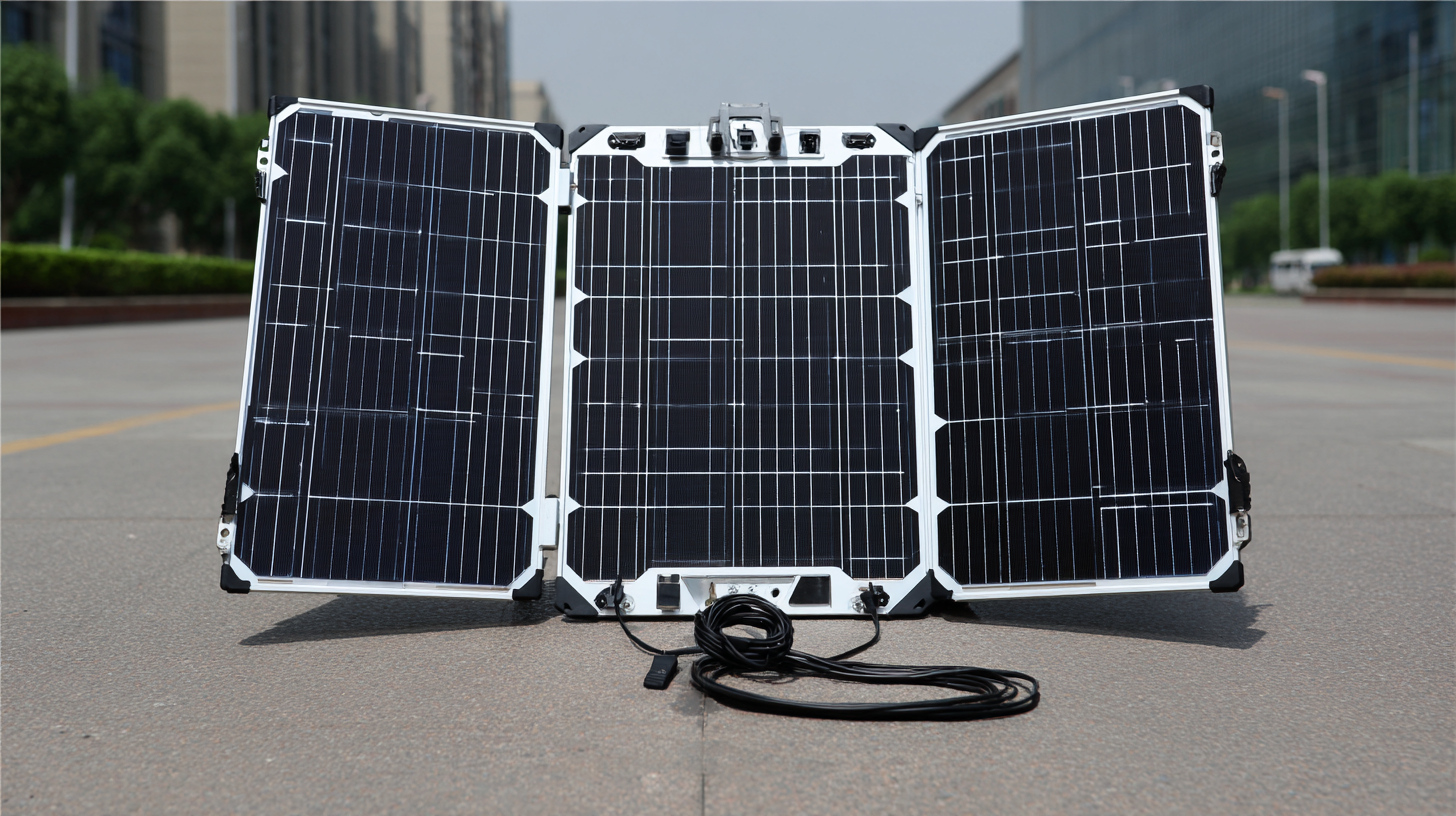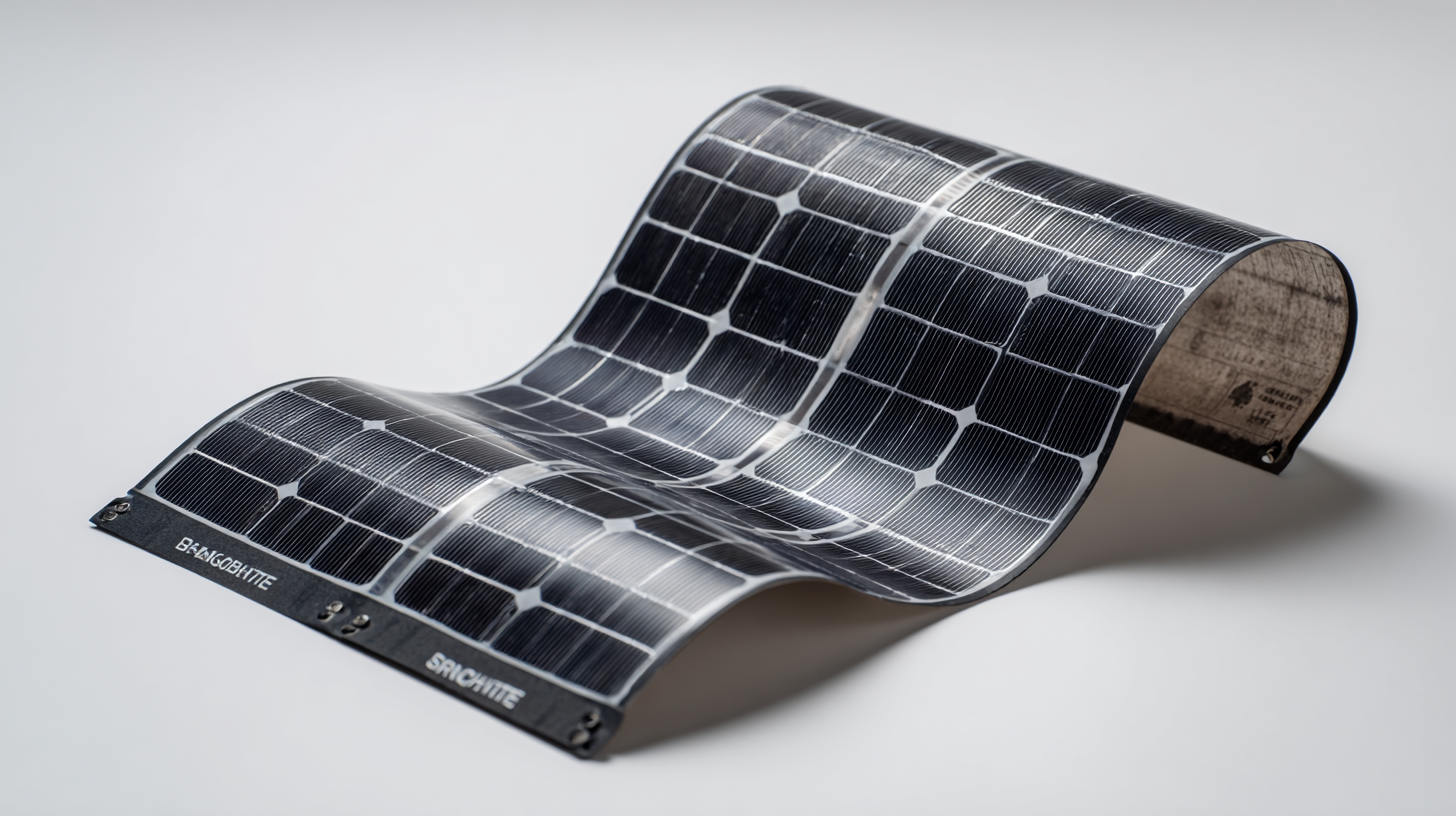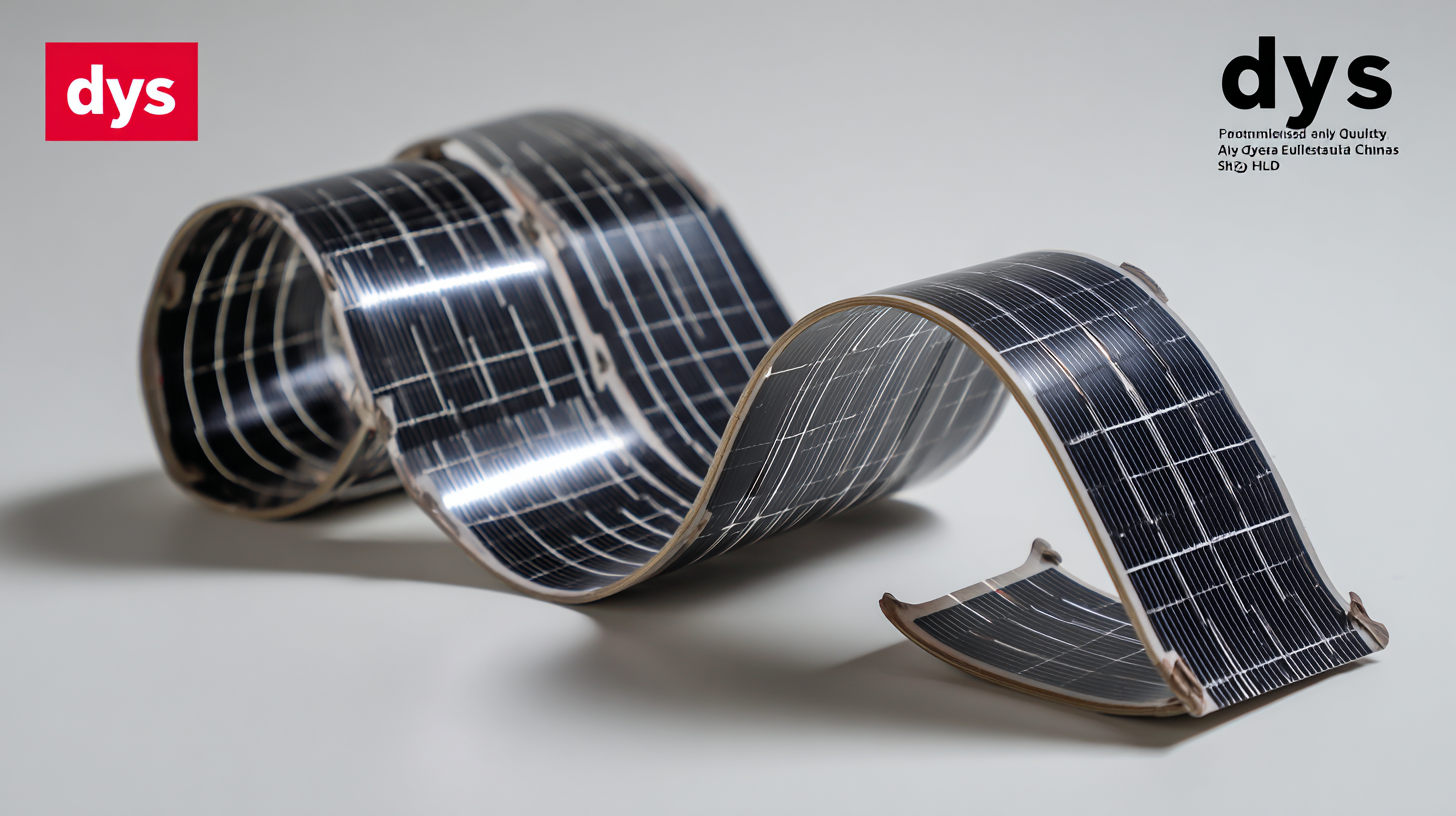
Unmatched Quality in Best Flexible Solar Panel Kits Crafted in China for Global Impact
The demand for renewable energy solutions has surged globally, with the solar energy market projected to exceed $223 billion by 2026, according to a recent report by ResearchAndMarkets.com. Among these solutions, the
Flexible Solar Panel Kit stands out as a versatile option for various applications, from residential use to outdoor adventures and industrial settings.
 Manufactured in China, these kits not only showcase cutting-edge technology but also adhere to rigorous quality standards that resonate with environmentally conscious consumers worldwide. With China's increasing focus on sustainability and innovation, the global community is poised to benefit from high-quality flexible solar panel kits that promise durability and efficiency, embodying the essence of
"中国制造,全球共享,品质值得信赖."
Manufactured in China, these kits not only showcase cutting-edge technology but also adhere to rigorous quality standards that resonate with environmentally conscious consumers worldwide. With China's increasing focus on sustainability and innovation, the global community is poised to benefit from high-quality flexible solar panel kits that promise durability and efficiency, embodying the essence of
"中国制造,全球共享,品质值得信赖."
Unveiling the Top Features of Flexible Solar Panel Kits from China
Flexible solar panel kits are rapidly gaining attention for their adaptability, efficiency, and lightweight characteristics, making them an ideal choice for diverse applications. Recent advancements in solar technology, particularly in perovskite solar cells, have revolutionized the potential of these kits. The incorporation of ultrathin layers of perovskite cells is not only enhancing the efficiency of solar modules but also paving the way for innovative products, such as power-generating windows. This evolution signifies a remarkable leap towards sustainable energy solutions that could transform how we harness solar power.
Chinese manufacturers are at the forefront of this movement, unveiling flexible solar panel modules that boast impressive efficiencies of up to 20.1%. These lightweight panels, weighing merely 7.5 kg, can be conveniently installed on rooftops or utilized in various portable solar applications. The ability of these flexible solar kits to perform well in dynamic environments, coupled with their durability and ease of installation, positions them as a game-changer in the renewable energy sector. As we continue to explore the potential of solar technology, Chinese innovations stand out, making global impacts on renewable energy deployment and sustainability.
5 Key Benefits of Choosing Flexible Solar Panels for Your Energy Needs
Flexible solar panels are rapidly becoming a preferred choice for energy solutions, thanks to their unique benefits. One of the primary advantages is their lightweight and adaptable design, which allows for easy installation on various surfaces, including vehicles and rooftops with limited structural integrity. This versatility not only enhances their usability but also broadens the scope of renewable energy access, making them an attractive option for both residential and commercial applications.
Moreover, recent advancements in photovoltaic technology have propelled the flexible solar panel market, with expectations for significant growth in the coming years. By leveraging innovative materials and designs, such as perovskite solar cells, these products are becoming more efficient and cost-effective. As energy prices are predicted to decline with increased grid flexibility and the integration of renewable sources, consumers can harness the full potential of flexible solar panels for sustainable energy solutions that meet their diverse needs. As the industry evolves, the commitment to flexibility and innovation will continue to empower users globally.
The Environmental Impact of Chinese Solar Panel Innovation
As the world pivots towards sustainable energy solutions, the rapid innovation in solar panel technology from China has made a significant environmental impact. According to a report by the International Energy Agency (IEA), solar power could provide more than 20% of global electricity by 2040, with Chinese manufacturers leading the charge. In 2022 alone, China produced more than 80% of the world’s solar panels, demonstrating its commitment to renewable energy and reduction of carbon emissions. The shift towards flexible solar panel kits, which are more adaptable and lightweight, is further enhancing their appeal for both residential and commercial applications.
Tip: When considering solar panel solutions, choose kits that utilize high-efficiency monocrystalline cells, as they generally offer better performance and longevity compared to other types.
Moreover, the environmental benefits of adopting these innovative solar technologies are profound. A study from the National Renewable Energy Laboratory (NREL) indicates that for every gigawatt of solar installed, over 1.5 million tons of carbon emissions are avoided. This aligns well with global goals to achieve net-zero emissions by 2050. By integrating flexible solar panels into everyday applications, we can maximize energy capture while minimizing our ecological footprint.
Tip: Always conduct a lifecycle assessment of solar panels to understand their complete environmental impact, from production to disposal, ensuring they align with your sustainability goals.

How Cost-Effective are Flexible Solar Panel Kits Compared to Traditional Options?
Flexible solar panel kits are rapidly gaining traction as a cost-effective solution in the renewable energy sector. According to a report by the International Renewable Energy Agency (IRENA), the cost of solar photovoltaics has fallen by approximately 85% since 2010, making solar energy more accessible. This significant reduction extends to flexible solar panels, which offer a lightweight alternative to traditional rigid panels. As they utilize advanced thin-film technology, these panels can be produced at a lower cost while maintaining efficiency levels that reach up to 22%.
Additionally, a study by the National Renewable Energy Laboratory (NREL) highlights that flexible solar kits typically have lower installation costs due to their lightweight design. Unlike traditional panels which often require specialized mounting systems, flexible kits can be adhered to various surfaces without heavy infrastructure, further reducing labor expenses. As a result, homeowners and businesses looking to invest in solar technology can find that flexible solar panel kits not only provide substantial savings upfront but also offer greater versatility in terms of installation and application, thus driving the global adoption of renewable energy solutions.
Cost-Effectiveness Comparison of Flexible Solar Panel Kits and Traditional Solar Panels
This chart compares the cost-effectiveness of flexible solar panel kits and traditional solar panel options, demonstrating the cost savings potential of flexible solar technology.
A Comparison of Performance: Flexible Solar Panels vs. Rigid Alternatives
In the ongoing rivalry between flexible solar panels and traditional rigid alternatives, recent advancements underscore a pivotal shift in the solar energy landscape. Flexible solar panels, particularly those utilizing organic materials and innovative technologies, are increasingly recognized for their lightweight and versatile applications. According to a comprehensive review of photovoltaic technology, the efficiency of next-generation printable solar cells has shown remarkable improvements, with some prototypes surpassing power conversion efficiencies of 20%. This leap is crucial for integrating solar power into wearable technologies and IoT devices, where form factor and weight are critical considerations.
On the other hand, traditional crystalline-silicon solar panels remain the industry stalwarts, renowned for their reliability and longevity, typically lasting between 20 and 25 years. However, emerging technologies like perovskite solar cells are challenging this status quo by promising high energy output at lower production costs. Recent studies have highlighted that perovskite cells can achieve efficiencies exceeding 25% and are now being adapted for various applications, including indoor energy generation. As the demand for eco-friendly and efficient energy solutions grows, the competition between flexible and rigid solar panels will likely intensify, paving the way for revolutionary strides in renewable energy adoption.


